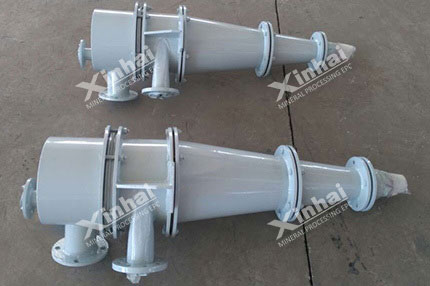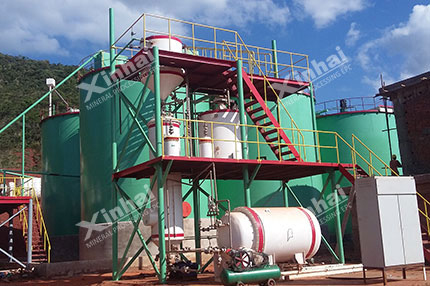Gold Tailings Reprocessing Technology
【Introduction】:In general, Xinhai extracts gold from old tailings by all-slime cyanidation and CIL technology. The gold tailings after cyanidation are dealt with tailings dry stacking method. It is a technology that recycles the filtrate to realize the water resources recycling in processing plants with pressure filtration process, and get rid of most cyanide in the tailings. For other elements in the gold tailings, Xinhai applies magnetic separation, flotation and other methods to deal with.
【Application】: Xinhai gold tailings reprocessing technology is mainly from environment protection and full utilization of resource, reprocessing the valuable gold tailings. According to the different characteristics of gold tailings, the reasonable gold tailings reprocessing technology is designed to make the tailings give full play to the value.
【Process Description】
There are mainly several methods of gold tailings reprocessing:
1. The iron recovery from gold tailings can adopts common processing technology such as gravity separation, magnetic separation, flotation, roasting magnetic separation and their combined processing technology. There are only four kinds of valuable minerals recovering by magnetic - gravity separation combined technology: magnetite, hematite, ilmenite, and garnet. Among them, the garnet is mainly iron aluminum garnet.
2. Gold and silver recovery from gold tailings by CIP. All-slime cyanidation carbon pulp gold extraction technology can recover the gold and silver from the old gold tailings. Xinhai usually adopts the all-slime cyanidation + CIP in the gold extraction from old tailings. The gold tailings after cyanidation are treated by dry stacking. That is a technology that recycles the filtrate to realize the water resources recycling in processing plants with pressure filtration process, and get rid of most cyanide in the tailings.
3. Other minerals recovery from gold tailings. The metal sulfide is mainly pyrite, and some are copper pyrite and bornite. The gold mineral is mainly natural gold, and some are electrum. The metal oxides are mainly speculative and siderite. The gangue minerals are mainly quartz, sericite, etc. The processing technology uses one-stage grinding, preferential flotation process. The gold and copper concentrate product can be recovered once.
In general, the gold recovery method of gold tailings is mainly the all-slime cyanidation CIP method. It is the recovery of residual gold particles from tailings by using the property of gold soluble in cyanide. The gold recovery for large capacity and low-grade gold tailings is common heap leaching.
【Case】
1. A gold processing plant in Inner Mongolia has a history of nearly forty years, which is a classical old processing plant. Before the new tailings pond construction completed in 2002, there are 90000 tons of tailings with recoverable tailing with high gold content in the old tailings pond. The gold content is about 1665 kg, and the silver content about 25 tons. Xinhai carried out industrial practice in handling tailings with the original 250tpd CIP plant. All-slime cyanidation method is applied to extract gold and silver from the gold tailings. To improve the indexes, vacuum was replaced by negative oxygen machine. Leaching and absorption at the same time. The gold-bearing carbon products finished product gold through electrolysis desorption. The main indexes are as follows: the original grade: gold 2.83g/t, silver 39g/t. The leaching rate of gold is 86.5%, the leaching rate of silver is 48%. The general recovery rate of gold processing and melting is 80.4%. The general recovery rate of silver processing and melting is 38.2%. The value of tailings is brought into full play, and also brings efficiency to the processing plant.
2. A tailings pond in North Korea stored more than 10 million tonnes of gold tailings. The average gold grade of the tailings is 1g/t. The recoverable valuable element is mainly gold, with little other kinds of harmful elements. There is no hidden danger of environmental pollution. Xinhai Mining provided the design of 2500t/d gold tailings flotation plant and helped it to realize the high-efficiency utilization of resource.




 Consult
Consult
 Leave Message
Leave Message yding@xinhaimining.net
yding@xinhaimining.net





